-
 Bitcoin
Bitcoin $106,754.6083
1.33% -
 Ethereum
Ethereum $2,625.8249
3.80% -
 Tether USDt
Tether USDt $1.0001
-0.03% -
 XRP
XRP $2.1891
1.67% -
 BNB
BNB $654.5220
0.66% -
 Solana
Solana $156.9428
7.28% -
 USDC
USDC $0.9998
0.00% -
 Dogecoin
Dogecoin $0.1780
1.14% -
 TRON
TRON $0.2706
-0.16% -
 Cardano
Cardano $0.6470
2.77% -
 Hyperliquid
Hyperliquid $44.6467
10.24% -
 Sui
Sui $3.1128
3.86% -
 Bitcoin Cash
Bitcoin Cash $455.7646
3.00% -
 Chainlink
Chainlink $13.6858
4.08% -
 UNUS SED LEO
UNUS SED LEO $9.2682
0.21% -
 Avalanche
Avalanche $19.7433
3.79% -
 Stellar
Stellar $0.2616
1.64% -
 Toncoin
Toncoin $3.0222
2.19% -
 Shiba Inu
Shiba Inu $0.0...01220
1.49% -
 Hedera
Hedera $0.1580
2.75% -
 Litecoin
Litecoin $87.4964
2.29% -
 Polkadot
Polkadot $3.8958
3.05% -
 Ethena USDe
Ethena USDe $1.0000
-0.04% -
 Monero
Monero $317.2263
0.26% -
 Bitget Token
Bitget Token $4.5985
1.68% -
 Dai
Dai $0.9999
0.00% -
 Pepe
Pepe $0.0...01140
2.44% -
 Uniswap
Uniswap $7.6065
5.29% -
 Pi
Pi $0.6042
-2.00% -
 Aave
Aave $289.6343
6.02%
Large volume breakthrough of the previous high: A true breakthrough is only a retracement without breaking?
A breakout in crypto trading signals potential trend shifts, but traders must confirm validity through volume, price behavior, and retests to avoid false signals.
Jun 14, 2025 at 11:43 am
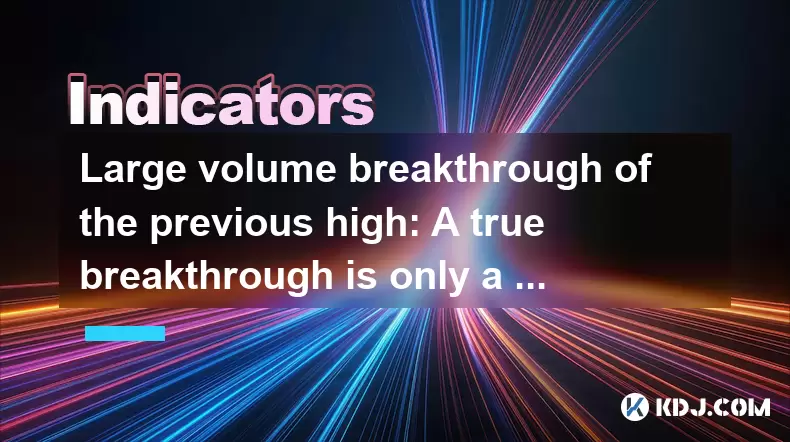
Understanding Breakouts in Cryptocurrency Trading
In the cryptocurrency market, breakouts are often viewed as critical signals for traders and investors. A breakout typically refers to a situation where the price of an asset moves beyond a previously established resistance or support level with significant volume. However, not all breakouts are created equal. Some appear strong at first glance but fail shortly after, leading to confusion among traders.
When a large volume breakout occurs above a previous high, it may seem like a powerful bullish signal. This is because increased trading volume usually indicates strong buying interest. Yet, in many cases, such a move can turn out to be just a retracement, especially if the price fails to sustain itself above that level and eventually drops back below it.
The Difference Between True Breakouts and False Breakouts
A true breakout is characterized by sustained movement beyond a key level, accompanied by strong and consistent volume. In contrast, a false breakout—also known as a fakeout—is when the price briefly surpasses a resistance or support level only to reverse quickly.
One common scenario in crypto markets involves large whales or institutional players pushing the price past a key level to trigger stop-loss orders or attract retail buyers before reversing the trend. This manipulation can create the illusion of a strong breakout while masking the real intent behind the move.
To distinguish between a genuine breakout and a retracement, traders should monitor:
- Volume consistency across multiple candlesticks
- Price behavior after the initial surge
- Market sentiment and broader macroeconomic factors
Analyzing Retracements After a Breakout
Even when a breakout seems legitimate, a retracement can occur naturally within the context of a healthy uptrend. These pullbacks allow the market to absorb recent gains and provide new entry opportunities for traders who missed the initial move.
For example, after a coin breaks out from a multi-week consolidation pattern with heavy volume, it might retrace back to test the broken resistance as new support. If the price holds above this level and volume remains supportive during the retest, the breakout is still considered valid.
Traders must understand that a retracement does not invalidate a breakout unless the price decisively closes below the original breakout level. Monitoring moving averages, RSI levels, and order book depth can help assess whether the retracement is part of a larger bullish trend or a reversal signal.
How to Confirm a Valid Breakout in Crypto Markets
Confirming a breakout requires more than just watching price cross above a resistance level. Here’s a step-by-step guide to validating whether a large volume breakout is sustainable:
- Check Volume Patterns: Look for a sharp increase in volume during the breakout candlestick. Compare it with the average volume over the past 20 days. A valid breakout usually shows volume significantly above average.
- Use Multiple Timeframes: Zoom into lower timeframes (e.g., 1-hour or 4-hour charts) to see how the price behaves after the breakout. Does it hold above the level, or does it get rejected?
- Wait for Retest: Observe if the price comes back to test the breakout level as support. If it bounces cleanly without closing below, the breakout remains intact.
- Evaluate Order Flow: Use order book analysis tools to determine whether large buy walls are forming near the breakout level, which could indicate institutional support.
- Watch for Candlestick Structure: The breakout candle should have a strong body with minimal wicks. Long upper wicks might suggest rejection, even on high volume.
By applying these checks, traders can better filter out false signals and avoid entering positions based on misleading momentum.
Common Pitfalls When Interpreting Breakouts
Many traders fall into the trap of assuming that a large volume breakout automatically confirms strength. Unfortunately, this is not always the case in volatile crypto markets.
Some common mistakes include:
- Entering too early without waiting for confirmation candles
- Ignoring key Fibonacci levels that might act as hidden resistance
- Failing to consider exchange-specific anomalies, such as pump-and-dump schemes or bot-driven spikes
- Not using stop-loss orders effectively after entering a trade
Additionally, some coins experience what's called a "dead cat bounce," where a short-lived rally mimics a breakout but lacks fundamental backing or ongoing demand. This kind of movement can easily mislead traders who rely solely on technical indicators.
Avoiding these pitfalls requires discipline, patience, and a well-defined trading plan that includes both technical and risk management components.
Frequently Asked Questions
Q: How much volume is considered significant for confirming a breakout?
A: There’s no fixed number, but generally, volume should be at least 50% higher than the 20-period average. Traders often look for volume surges that are 2–3 times the average to confirm stronger conviction.
Q: Can a breakout be confirmed without retesting the broken level?
A: Yes, although retests add confidence, they are not mandatory. As long as the price continues to move in the breakout direction with sustained volume and momentum, the breakout can still be considered valid.
Q: What time frame is best for identifying reliable breakouts?
A: Higher time frames like the daily chart offer more reliable breakout signals due to reduced noise and increased significance of historical price levels. However, traders often combine daily and 4-hour charts to time entries more precisely.
Q: Should I use limit orders or market orders during a breakout?
A: It depends on your strategy. For aggressive entries, market orders ensure execution during fast-moving breakouts. For precision and control, limit orders placed slightly above resistance can help secure better entry prices while avoiding slippage.
Disclaimer:info@kdj.com
The information provided is not trading advice. kdj.com does not assume any responsibility for any investments made based on the information provided in this article. Cryptocurrencies are highly volatile and it is highly recommended that you invest with caution after thorough research!
If you believe that the content used on this website infringes your copyright, please contact us immediately (info@kdj.com) and we will delete it promptly.
- 2025-W Uncirculated American Gold Eagle and Dr. Vera Rubin Quarter Mark New Products
- 2025-06-13 06:25:13
- Ruvi AI (RVU) Leverages Blockchain and Artificial Intelligence to Disrupt Marketing, Entertainment, and Finance
- 2025-06-13 07:05:12
- H100 Group AB Raises 101 Million SEK (Approximately $10.6 Million) to Bolster Bitcoin Reserves
- 2025-06-13 06:25:13
- Galaxy Digital CEO Mike Novogratz Says Bitcoin Will Replace Gold and Go to $1,000,000
- 2025-06-13 06:45:13
- Trust Wallet Token (TWT) Price Drops 5.7% as RWA Integration Plans Ignite Excitement
- 2025-06-13 06:45:13
- Ethereum (ETH) Is in the Second Phase of a Three-Stage Market Cycle
- 2025-06-13 07:25:13
Related knowledge
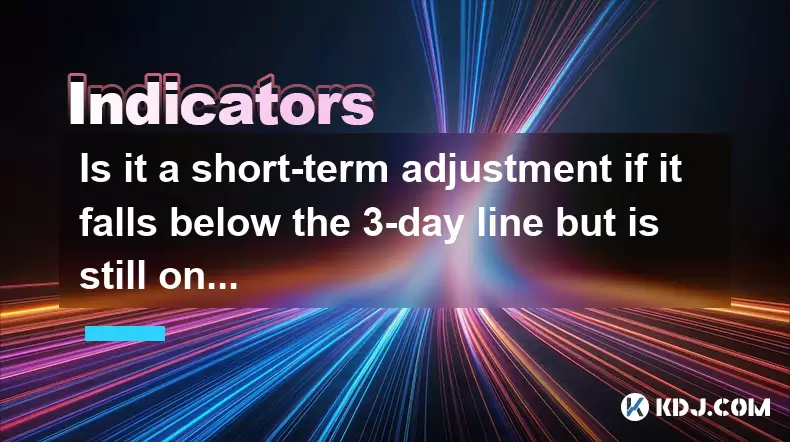
Is it a short-term adjustment if it falls below the 3-day line but is still on the 10-day line?
Jun 17,2025 at 04:07pm
Understanding the 3-Day and 10-Day Moving AveragesIn cryptocurrency trading, moving averages are essential tools for gauging trend strength and potential reversals. The 3-day moving average is a short-term indicator that reflects recent price action with minimal lag, making it highly sensitive to sudden market shifts. In contrast, the 10-day moving aver...
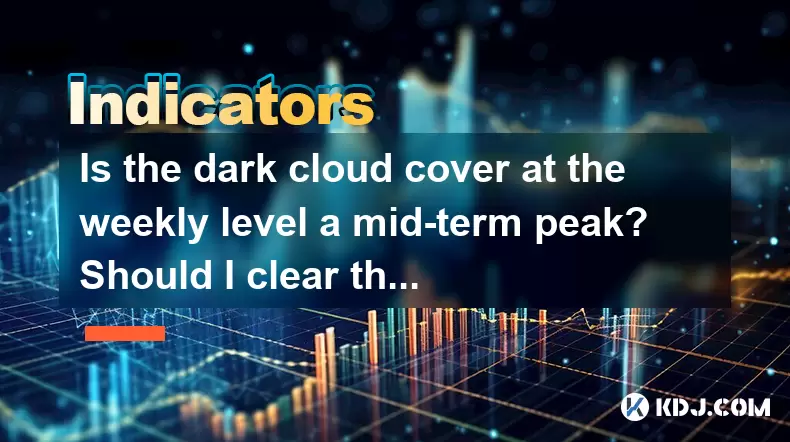
Is the dark cloud cover at the weekly level a mid-term peak? Should I clear the position?
Jun 17,2025 at 02:21pm
Understanding the Dark Cloud Cover PatternThe Dark Cloud Cover is a well-known candlestick pattern used by technical analysts to identify potential trend reversals from bullish to bearish. It typically forms at the end of an uptrend and consists of two candles: the first is a strong bullish (green) candle, followed by a bearish (red) candle that opens h...
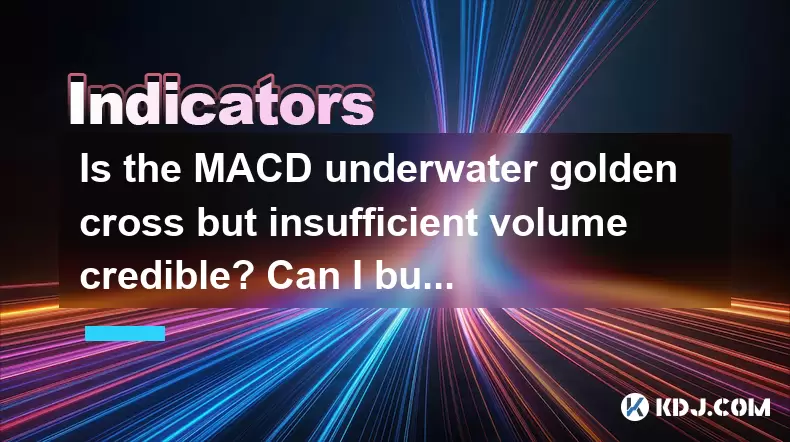
Is the MACD underwater golden cross but insufficient volume credible? Can I buy at the bottom?
Jun 17,2025 at 03:08pm
Understanding the MACD Underwater Golden CrossThe MACD underwater golden cross occurs when the MACD line crosses above the signal line below the zero line, signaling a potential reversal from a downtrend to an uptrend. This phenomenon is often interpreted by traders as a bullish signal, especially in cryptocurrency markets where momentum plays a signifi...
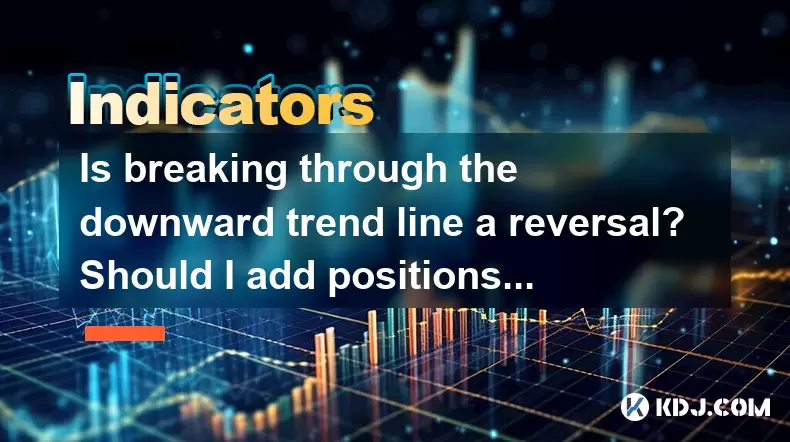
Is breaking through the downward trend line a reversal? Should I add positions?
Jun 17,2025 at 05:22pm
Understanding the Downward Trend Line in Cryptocurrency TradingIn cryptocurrency trading, a downward trend line is drawn by connecting two or more high points on a price chart, indicating a consistent decline in asset value. This line serves as a resistance level, showing that sellers are dominating the market. When the price breaks above this line, it ...
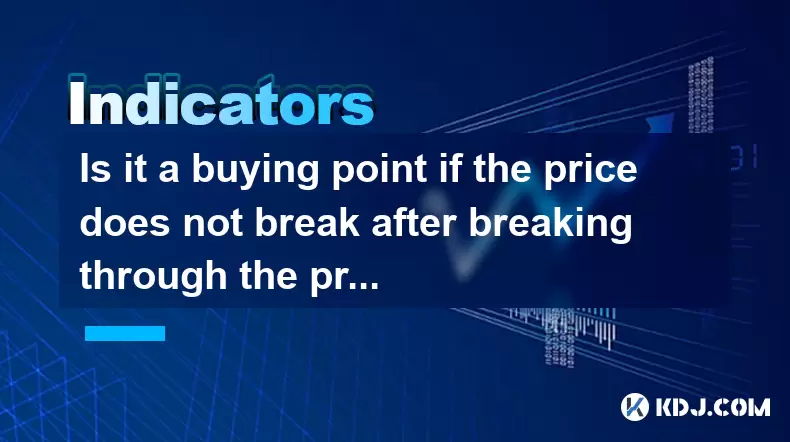
Is it a buying point if the price does not break after breaking through the previous high? How to confirm?
Jun 17,2025 at 01:22pm
Understanding Price Behavior After Breaking Previous HighsWhen analyzing cryptocurrency price charts, traders often look for breakouts as potential signals for new trends. A common question among traders is whether a non-breakdown after breaking through a previous high indicates a buying opportunity. To answer this, it's essential to understand the psyc...
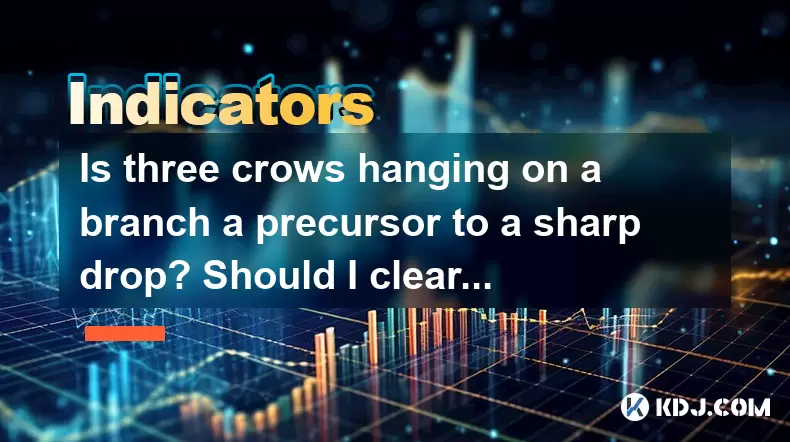
Is three crows hanging on a branch a precursor to a sharp drop? Should I clear my position?
Jun 17,2025 at 12:50pm
What Does 'Three Crows Hanging on a Branch' Mean in Crypto Trading?In technical analysis, the 'three crows hanging on a branch' is a candlestick pattern that often signals a potential reversal from an uptrend to a downtrend. This pattern typically appears after a period of rising prices and consists of three consecutive bearish (red) candles with progre...

Is it a short-term adjustment if it falls below the 3-day line but is still on the 10-day line?
Jun 17,2025 at 04:07pm
Understanding the 3-Day and 10-Day Moving AveragesIn cryptocurrency trading, moving averages are essential tools for gauging trend strength and potential reversals. The 3-day moving average is a short-term indicator that reflects recent price action with minimal lag, making it highly sensitive to sudden market shifts. In contrast, the 10-day moving aver...

Is the dark cloud cover at the weekly level a mid-term peak? Should I clear the position?
Jun 17,2025 at 02:21pm
Understanding the Dark Cloud Cover PatternThe Dark Cloud Cover is a well-known candlestick pattern used by technical analysts to identify potential trend reversals from bullish to bearish. It typically forms at the end of an uptrend and consists of two candles: the first is a strong bullish (green) candle, followed by a bearish (red) candle that opens h...

Is the MACD underwater golden cross but insufficient volume credible? Can I buy at the bottom?
Jun 17,2025 at 03:08pm
Understanding the MACD Underwater Golden CrossThe MACD underwater golden cross occurs when the MACD line crosses above the signal line below the zero line, signaling a potential reversal from a downtrend to an uptrend. This phenomenon is often interpreted by traders as a bullish signal, especially in cryptocurrency markets where momentum plays a signifi...

Is breaking through the downward trend line a reversal? Should I add positions?
Jun 17,2025 at 05:22pm
Understanding the Downward Trend Line in Cryptocurrency TradingIn cryptocurrency trading, a downward trend line is drawn by connecting two or more high points on a price chart, indicating a consistent decline in asset value. This line serves as a resistance level, showing that sellers are dominating the market. When the price breaks above this line, it ...

Is it a buying point if the price does not break after breaking through the previous high? How to confirm?
Jun 17,2025 at 01:22pm
Understanding Price Behavior After Breaking Previous HighsWhen analyzing cryptocurrency price charts, traders often look for breakouts as potential signals for new trends. A common question among traders is whether a non-breakdown after breaking through a previous high indicates a buying opportunity. To answer this, it's essential to understand the psyc...

Is three crows hanging on a branch a precursor to a sharp drop? Should I clear my position?
Jun 17,2025 at 12:50pm
What Does 'Three Crows Hanging on a Branch' Mean in Crypto Trading?In technical analysis, the 'three crows hanging on a branch' is a candlestick pattern that often signals a potential reversal from an uptrend to a downtrend. This pattern typically appears after a period of rising prices and consists of three consecutive bearish (red) candles with progre...
See all articles

























































































